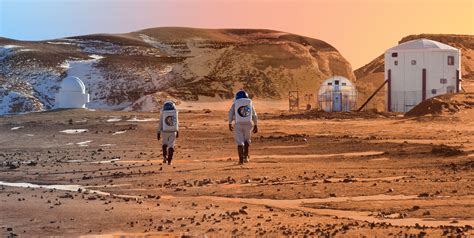The concept of panspermia, specifically involving Mars as a cradle for the inception of life, has stirred not only the scientific community but also captured the imagination of space enthusiasts and the general public. Given recent discoveries suggesting Mars once harbored environments akin to early Earth, it’s plausible to consider that life might have begun there—possibly even seeding Earth. This is not just a tantalizing narrative for science fiction but a serious scientific hypothesis, bolstered by the idea that life arose on Earth almost immediately after it became hospitable. If Mars became stable quicker due to its smaller size, life could have started and thrived there before being transferred to Earth via meteorites.
Mars’s ancient habitable conditions bring crucial context to discussions about the Fermi Paradox and the Great Filter theory. These theories ponder why, if conditions suitable for life are not rare in the cosmos, have we not encountered extraterrestrial beings? The notion that Mars might have supported life early in its history adds a layer of complexity to these debates, suggesting Earth’s biosphere could be an inherited one. This pushes the boundaries of our introspection on the universality of life and the potential interconnectedness within our solar system. Mars, due to its proximity and shared history with Earth, is a prime candidate for such studies, further highlighted by ongoing missions and research.
The practical implications of Martian life—past or present—are vast. If Martian organisms were found, especially if they share a genetic heritage with Earth life, it would imply a shared origin. This panspermic link would have profound implications for biology, shaking the very foundations of our understanding of life as an Earth-centered phenomenon and suggesting a more universal mechanism for life’s distribution. However, the absence of current life signs on Mars poses significant questions about the planet’s shift from habitability to inhospitability, which could similarly enlighten Earth’s potential future.
Despite the enticing notion of Martian life, several scientific challenges remain. Life, as posited by our current understanding, necessitates not just the right chemicals but also a sustainable energy source and stable environmental conditions long enough for complex biology to emerge. Mars today lacks such conditions, bringing into question how and when its environment changed, and whether life—if it ever started—could survive that transition. Research missions and studies aim to unravel these mysteries, looking for signs of ancient microbes or biosignatures embedded in Martian rock or below its surface.
As discussions and hypotheses turn over, the role of future Mars missions becomes increasingly vital. Technologies enabling deeper geological surveys and more sensitive life-detection instrumentation are essential to move from speculation to scientific evidence. The future of Mars exploration may not only uncover the secrets of our neighboring planet but could potentially unveil the broader cosmic story of life—a narrative in which Earth and Mars may be deeply entwined chapters.


Leave a Reply